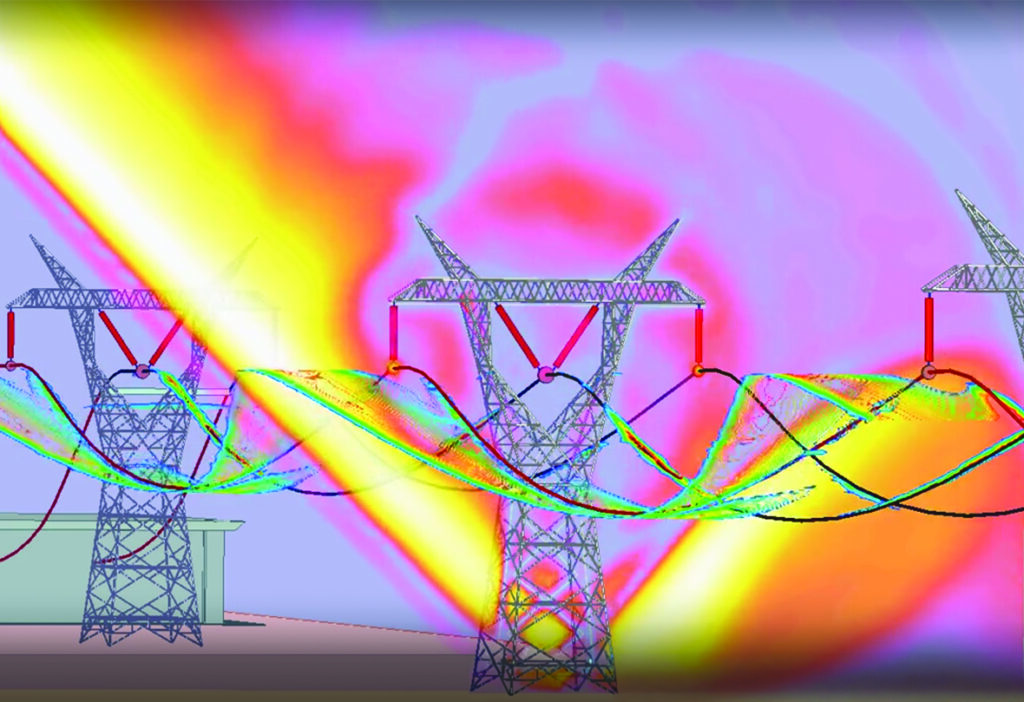Story contributed by Texas Representative COL Terry Wilson, US Army Retired
Electricity is the invisible lifeline of modern society. Without it, systems that support our survival—clean water, food supply, healthcare, transportation, and communication—grind to a halt. In the event of a catastrophic failure, society could descend into crisis within days.
That is why Texas must treat the threat of electromagnetic pulses (EMPs) with the seriousness it deserves. EMPs, whether caused by natural solar storms or man-made attacks, have the potential to disrupt or destroy unprotected electronic systems, crippling the power grid and plunging communities into chaos.
EMPs: The Silent Threat that Could Shut Texas Down
EMPs are bursts of electromagnetic energy capable of damaging or destroying electronics over a wide area. These can come from high-altitude nuclear detonations (HEMPs) or natural phenomena like geomagnetic solar storms. Either way, the result is the same: a blackout that could last not hours, but months—or even years.

Such an event would devastate Texas. Water pumps would fail. Fuel couldn’t be delivered. Medical equipment would shut down. Grocery stores would be emptied within hours and restocking them would be impossible. The power grid’s most vulnerable components—large transformers—can take years to replace, and the supply chain for these devices is almost entirely overseas.
This is a nonpartisan issue. If the lights go out, they will be out for everyone.
When, not ‘If’
In the years leading up to 2005, meteorologists made clear that it was only a matter of when, not if a Category 5 Hurricane would hit New Orleans, putting their levies to the ultimate test. Yet, the New Orleans Levy Board chose to ignore the warnings, believing the threat to be too far off to justify immediate expenditure. As a member of the U.S. Army’s response team for Hurricane Katrina, I saw firsthand the devastation that willful negligence can cause.
Those same emergency management specialists who warned the New Orleans Levy Board make clear that the question of a geomagnetic solar storm striking without warning is also a question of when and not if it will happen.
Think of these storms as a type of “space weather” that happens when a large burst of energy from the sun hits Earth’s magnetic field. In 1921, a massive geomagnetic solar storm impacted our atmosphere that, were it to hit today, would permanently destroy 350 electrical transformers, leaving 130,000,000 Americans without power indefinitely.
Natural disasters aren’t the only threat to our power grid. Man-made dangers also pose serious risks—from electromagnetic pulse (EMP) weapons launched by adversaries like China to the growing strain of emerging industries such as artificial intelligence, data mining, advanced manufacturing, and electric vehicles. With these mounting pressures, enhanced market incentives and stronger regulatory frameworks are essential to ensure electric utilities prioritize grid security.

This is not science fiction. The federal government has long acknowledged EMPs are a national security threat and, as of late last year, so has Texas. With Governor Greg Abbott’s Executive Order GA-49 creating a multi-agency task force, the Lone Star State has taken a significant step toward strengthening its infrastructure against EMPs and related threats.
A Real and Present Danger
Federal attention to EMPs dates back decades, to concerns caused by nuclear tests in the 1950s and 1960s. Prior to 9/11, Congress authorized the Commission to Assess the Threat to the United States from Electromagnetic Pulse (EMP) Attack; attempts were made to strengthen our nation’s preparedness from the commission’s first reports. In 2019, the Trump administration issued an executive order instructing agencies to prioritize EMP resilience. The 2024 GAO report and earlier findings by the Congressional EMP Commission further emphasized the vulnerability of U.S. infrastructure.
Texas is now following through with real action. Governor Abbott’s Executive Order GA-49 tasks the Texas Division of Emergency Management (TDEM) with assessing the threat of EMPs and other critical infrastructure risks. In its January 2025 response, TDEM laid out clear warnings and recommendations:
- EMPs pose a known threat, with adversary nations, including China, openly discussing their use.
- Texas should invest in EMP-resilient technologies and infrastructure hardening.
- Grid components like transformers and conductors must be updated to withstand both fast-pulse (E1) and slow-pulse (E3) EMP effects.
Importantly, the report also called for a realistic evaluation of EMP threat levels. Current national standards, set by the North American Electric Reliability Council (NERC), the equivalent of ERCOT for the Eastern half of North America, protect against a pulse of only 0.8 volts per kilometer. Research from the Department of Defense and the Congressional EMP Commission suggests the standard should be closer to 85–100 volts per kilometer—more than 100 times higher. Without realistic models, no protection plan can be effective.
Texas Research Institutions Are Stepping Up
Fortunately, Texas is home to some of the nation’s most advanced research centers on EMP resilience. At Texas Tech University, the Center for Pulsed Power and Power Electronics (P3E) has supported U.S. defense and energy agencies since the 1960s. Its EMP simulators are among the most advanced in the country.
Texas Tech’s GLEAMM microgrid lab is also working on real-world solutions to manage energy flows and isolate grid components during emergencies. Meanwhile, Texas A&M University is conducting EMP simulations in partnership with ERCOT—the Electric Reliability Council of Texas—to assess the real-world impact on our state’s grid.
These institutions are not only producing cutting-edge research, but they are also anchoring a new statewide strategy that could become a model for the nation.
Growing Grid, Growing Risks
With more than 1,000 people moving to Texas each day, our demand for electricity is growing, driven by everything from AI and data centers to electric vehicles and industrial manufacturing. That makes grid stability more vital, and the grid more vulnerable than ever before.
Hardening the grid used to be prohibitively expensive, but not anymore. Technological advances have slashed costs, making EMP mitigation a realistic and achievable goal. We are now at a tipping point. Modernizing both public and private infrastructure is not only possible—it is essential.
FROM THE EDITOR • Why Grid Security Matters More in Texas
In case you’re new to the Lone Star State, it’s important to know the United States operates on three main power grids: Eastern Interconnection–serving states east of the Rockies, Western Interconnection–serving states west of the Rockies, and the Texas Interconnection, which stands alone, operated primarily by ERCOT. Unlike other states, Texas does not rely on the federal grid. That independence gives our state more control—but creates greater challenges if our grid is compromised.
Winter Storm Uri in 2021 made it clear that while Texas’s power grid is independent, it is not invulnerable. The combination of energy isolation, insufficient weatherization, overreliance on natural gas, and prolonged blackouts exposed critical gaps in the system and caused widespread damage and suffering. — Ann Marie Kennon
Senate Bill 75: Turning Awareness into Action
On May 26, Senate Bill 75 (SB 75) was sent to Governor Abbott by the Texas Legislature, following unanimous votes in the Texas House and Texas Senate, codifying the state’s new commitment to grid security and creating the Texas Grid Security Commission. The Commission, building on Governor Abbott’s executive order, is charged with developing and implementing a comprehensive resilience plan for the critical infrastructure of our state.
I am proud to have sponsored this bill in the Texas House, a bill authored by State Senator Bob Hall and one he has championed for the last six sessions!
Under SB 75, the Commission will:
- Assess vulnerabilities across energy, communications, emergency services, transportation, and more;
- Recommend protection standards and strategies for EMPs and cyber threats;
- Establish resiliency certifications for microgrids;
- Oversee implementation via ERCOT, the PUC, and the Railroad Commission; and
- Track compliance and report progress to the legislature.
This approach doesn’t just improve emergency preparedness. It positions Texas as a national leader in grid innovation and security.
The message is clear. Texas is taking the security of our critical infrastructure seriously—and it’s time we all did.
A Secure Grid Means a Stronger Texas
Grid security is not just a safety issue, but also an economic opportunity. A resilient energy system gives businesses confidence to invest, reduces disaster recovery costs, and protects millions of Texans from catastrophic disruption. The economic benefits of investing in grid resilience far outweigh the short-term savings of delay or inaction.
By establishing enforceable protections, incentivizing innovation, and leveraging our research institutions, Texas is creating a model that other states—and even the federal government—can follow.
Texas is at a crossroads. The threats to our power grid are real, rising, and within our control, if we act now. Through Executive Order GA-49, SB 75, and strong leadership from researchers, lawmakers, and utilities, Texas is taking the decisive steps needed to protect the lifeblood of modern civilization: electricity.
With bipartisan support, technological momentum, and a clear sense of urgency, we have the tools to get this right. It is not just about keeping the lights on. It is about protecting lives, defending freedom, and ensuring Texas remains strong, no matter what comes our way.
